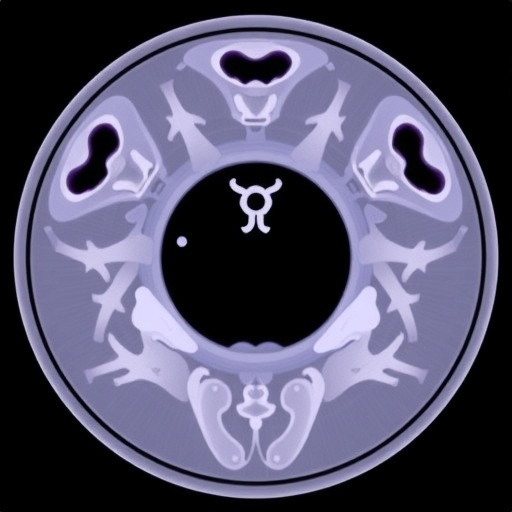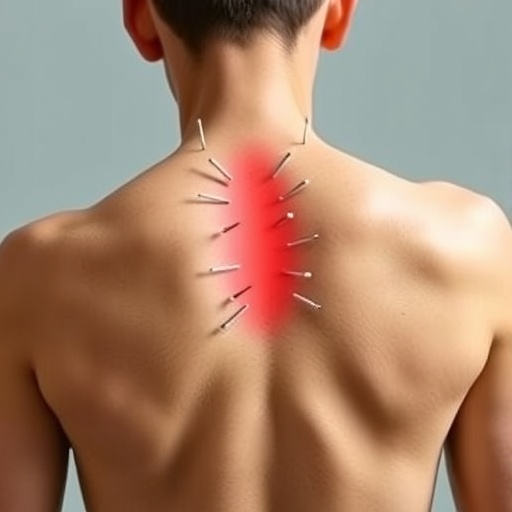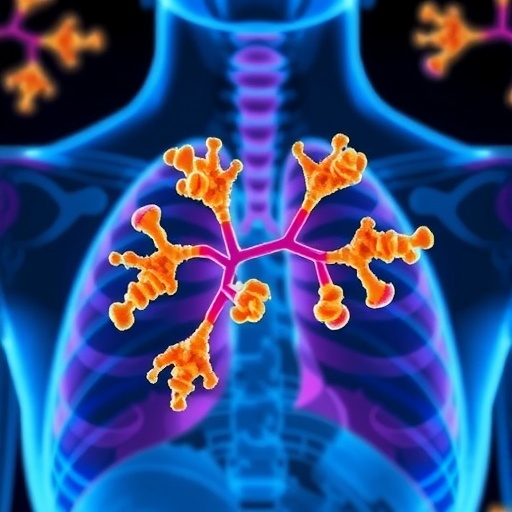
In a groundbreaking study poised to elevate dental imaging techniques, researchers have unveiled a hybrid approach that effectively combines dual-energy methods and inpainting techniques to significantly reduce metal artifacts in cone beam computed tomography (CBCT). This advancing medical technology is especially crucial for dentomaxillofacial imaging, where metal implants or hardware often obscure vital anatomical details. The novel methodology promises to enhance the clarity and diagnostic accuracy of imaging, thus revolutionizing the way dental care professionals approach treatment planning for patients with metal implants.
Metal artifacts commonly arise from the presence of dense metallic objects within the scanned region, leading to radiopaque streaks or dark bands that obscure important anatomical structures. These artifacts can severely impact diagnostic interpretations, leading to potential misdiagnoses or inadequate treatment plans. The significance of effectively mitigating such artifacts cannot be overstated—accurate imaging is the cornerstone of effective patient care and surgical planning, making innovations in this field essential for patient outcomes.
The authors of the study—the distinguished researchers D. Jayakody, H. Agrawal, and E. Räinä, among others—have presented evidence from their proof-of-concept phantom study set within a controlled environment. In this research, they utilized specially designed phantoms that replicate complex anatomical structures while incorporating various metallic components. This allowed them to observe the performance of their hybrid approach under realistic conditions, thus ensuring the reliability of the outcomes.
By leveraging dual-energy imaging, the researchers successfully distinguished between different tissue types based on their attenuation properties at varying energy levels. This fundamental principle allows for the segmentation of images, enhancing the separation of metallic structures from their surrounding tissues in the acquired scans. Consequently, this step is pivotal in reducing falsely generated artifacts that traditionally arise due to metal in imaging contexts.
In addition to the dual-energy component, the study incorporated an advanced inpainting technique designed to reconstruct regions of interest that were significantly corrupted by artifacts. Inpainting, a process traditionally employed in digital imaging to fill in lost or damaged areas, was adapted to function in a medical imaging context. The combination of these two sophisticated methodologies enables a comprehensive strategy for clearing up diagnostically useful information from heavily distorted scans caused by metal artifacts.
The significance of the study’s results is underscored by the substantial decrease in metal artifact presence as compared to conventional imaging methods. Quantitative analysis demonstrated that the hybrid approach yielded a notable improvement in image quality, as evidenced by enhanced visibility of anatomical landmarks that are typically obscured by metal. This advancement highlights a potential turning point in the effectiveness of dentomaxillofacial imaging, particularly in guiding surgical decisions.
The researchers meticulously documented their methods, establishing a reproducible framework that other studies can build upon. They found that comparative tests between traditional CBCT scans and those processed with the hybrid method produced marked discrepancies in artifact levels. Such findings lay the groundwork for future investigations that could refine this technique further, evolving its applicability across a broader range of clinical scenarios.
Importantly, ethical considerations surrounding medical imaging and patient privacy remain paramount. The study was conducted within strict ethical guidelines, emphasizing the importance of obtaining necessary approvals and consent for any human-related research in the future. Moving forward, it will be imperative for researchers in this arena to maintain these ethical standards while pushing the boundaries of innovation in medical imaging.
Moreover, the potential for clinical implementation of this hybrid approach is immense. Dental practitioners and radiologists can anticipate the ability to provide higher-quality imaging, which in turn can facilitate better patient care, informed treatment decisions, and improved surgical outcomes. In a field where precision is key, such an advancement could lead to broader acceptance of advanced imaging techniques in routine practice.
As the study gains attention within the academic community, researchers are keenly observing its implications for future studies focused on similar applications. They are encouraged by the promising results that indicate not only the feasibility of their approach but also its significant potential for scalability. The conversation surrounding metal artifact reduction in CBCT imaging is likely to fuel further innovation, inspiring subsequent research collaborations targeting enhanced medical imaging solutions.
It’s important to highlight that while the results are promising, further studies are essential to validate these findings in diverse clinical settings. Future research endeavors could involve multiple institutions, assessing the performance of the hybrid approach in a variety of populations and clinical conditions. Continued exploration will be key to understanding the full scope of this methodology’s capabilities and limitations.
In conclusion, the work of Jayakody, Agrawal, Räinä, and their colleagues represents a remarkable leap forward in the quest for clearer, more diagnostic medical imaging. The integration of dual-energy and inpainting methods stands to change the landscape of dentomaxillofacial imaging, overcoming a significant barrier posed by metal artifacts. By paving the way for improved imaging techniques, this innovative research not only enhances diagnostic confidence but also augments treatment efficacy for countless patients reliant on dental care.
As this study becomes a talking point in radiological symposia and clinical forums, the conversation surrounding the importance of technological advances in healthcare continues to evolve. The implications of such research highlight the need for ongoing investment in medical imaging technology, ensuring that patients receive the most effective and accurate care possible. As the field progresses, there is no doubt that the hybrid approach could inspire new strategies and tools tailored to overcoming challenges in medical imaging.
Strong and effective collaboration across research, clinical, and technological domains will be required as the hybrid methodology gains traction in the daily practice of dental imaging. The future looks promising, as the synergy of advanced imaging techniques paves the way for innovations that enhance the precision and efficacy of patient care.
Subject of Research: Metal Artifact Reduction in Dentomaxillofacial CBCT
Article Title: A Hybrid Approach Combining Dual-Energy and Inpainting Methods for Metal Artifact Reduction in Dentomaxillofacial CBCT: A Proof-of-Concept Phantom Study.
Article References:
Jayakody, D., Agrawal, H., Räinä, E. et al. A Hybrid Approach Combining Dual-Energy and Inpainting Methods for Metal Artifact Reduction in Dentomaxillofacial CBCT: A Proof-of-Concept Phantom Study.
Ann Biomed Eng (2025). https://doi.org/10.1007/s10439-025-03811-1
Image Credits: AI Generated
DOI: 10.1007/s10439-025-03811-1
Keywords: Metal Artifact Reduction, CBCT, Dual-Energy Imaging, Inpainting Techniques, Dentomaxillofacial Imaging.
Tags: artifact mitigation in medical imagingcone beam computed tomography innovationsdentomaxillofacial imaging advancementsdual-energy methods in CBCTenhancing diagnostic accuracy in dentistryevidence from phantom studies in CBCThybrid imaging techniquesimpact of metal implants on imagingpatient care in dental treatmentsreducing metal artifacts in dental imagingresearchers in dental imaging technologysurgical planning with improved imaging




